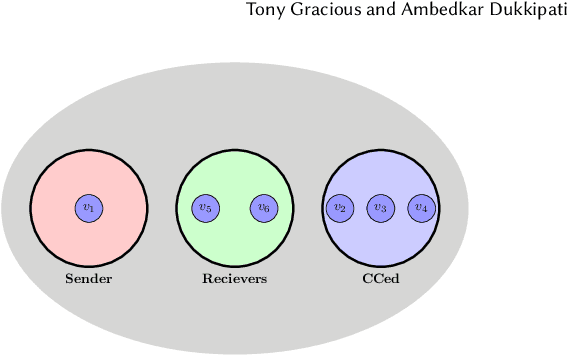Interaction Event Forecasting in Multi-Relational Recursive HyperGraphs: A Temporal Point Process Approach
Paper and Code
Apr 27, 2024



Modeling the dynamics of interacting entities using an evolving graph is an essential problem in fields such as financial networks and e-commerce. Traditional approaches focus primarily on pairwise interactions, limiting their ability to capture the complexity of real-world interactions involving multiple entities and their intricate relationship structures. This work addresses the problem of forecasting higher-order interaction events in multi-relational recursive hypergraphs. This is done using a dynamic graph representation learning framework that can capture complex relationships involving multiple entities. The proposed model, \textit{Relational Recursive Hyperedge Temporal Point Process} (RRHyperTPP) uses an encoder that learns a dynamic node representation based on the historical interaction patterns and then a hyperedge link prediction based decoder to model the event's occurrence. These learned representations are then used for downstream tasks involving forecasting the type and time of interactions. The main challenge in learning from hyperedge events is that the number of possible hyperedges grows exponentially with the number of nodes in the network. This will make the computation of negative log-likelihood of the temporal point process expensive, as the calculation of survival function requires a summation over all possible hyperedges. In our work, we use noise contrastive estimation to learn the parameters of our model, and we have experimentally shown that our models perform better than previous state-of-the-art methods for interaction forecasting.
 Add to Chrome
Add to Chrome Add to Firefox
Add to Firefox Add to Edge
Add to Edge